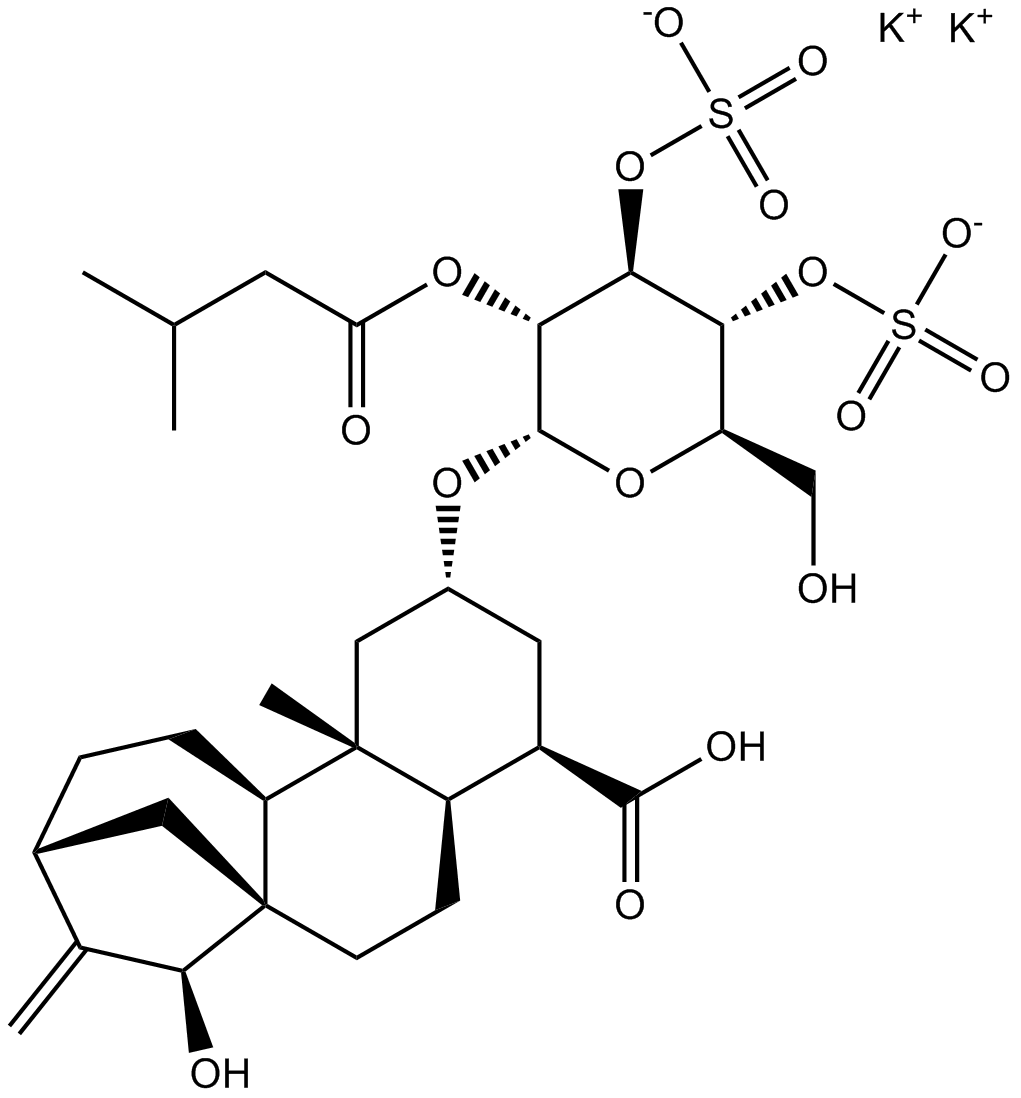Atractyloside Dipotassium Salt |
| Catalog No.GC15878 |
Inhibitor of ADP/ATP translocases
Products are for research use only. Not for human use. We do not sell to patients.

Cas No.: 102130-43-8
Sample solution is provided at 25 µL, 10mM.
Atractyloside Dipotassium Salt is an inhibitor of ADP/ATP Translocase.
ATP-ADP translocase (AAT) is a mitochondrial ADP/ATP carrier. It transports ATP from the mitochondrial matrix to the cytoplasm and transports ADP from the cytoplasm to the mitochondrial matrix.
In Ehrlich ascites tumor cells, atractyloside (3 mM) inhibited cells growth by 70%. The mitochondria became spherical shaped with translucent matrix rid of cristae. When transfered to normal medium, proliferation and macromolecular synthesis recovered to normal levels within 3 to 6 h [2].
In the sarcoplasmic reticulum vesicles from the rabbit skeletal muscle with 10 μM of cytoplasmic Ca2+, atractyloside reduced the rate of choline+ influx through the Ca2+ channels to 60%. Also, it inhibited about half of Ca2+ channels incorporated into planar bilayers [1]. In mitochondrial membranes isolated from a rat heart muscle, atractyloside (5-100 μM) inhibited the chloride channels in dose-dependent way [3].
References:
[1]. Yamaguchi N, Kagari T, Kasai M. Inhibition of the ryanodine receptor calcium channel in the sarcoplasmic reticulum of skeletal muscle by an ADP/ATP translocase inhibitor, atractyloside. Biochem Biophys Res Commun, 1999, 258(2): 247-251.
[2]. Pick-Kober KH, Schneider F. Proliferation, macromolecular synthesis and energy metabolism of in vitro grown Ehrlich ascites tumor cells after inhibition of ATP-ADP translocation by atractyloside. Eur J Cell Biol, 1984, 34(2): 323-329.
[3]. Malekova L, Kominkova V, Ferko M, et al. Bongkrekic acid and atractyloside inhibits chloride channels from mitochondrial membranes of rat heart. Biochim Biophys Acta, 2007, 1767(1): 31-44.
Average Rating: 5 (Based on Reviews and 30 reference(s) in Google Scholar.)
GLPBIO products are for RESEARCH USE ONLY. Please make sure your review or question is research based.
Required fields are marked with *




















